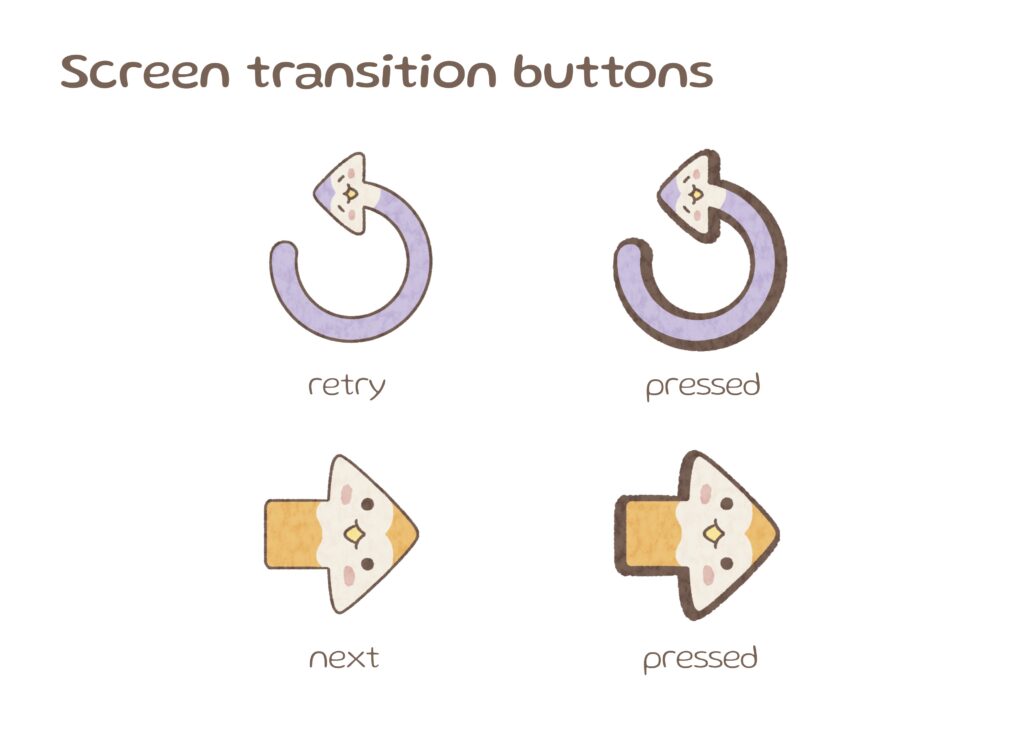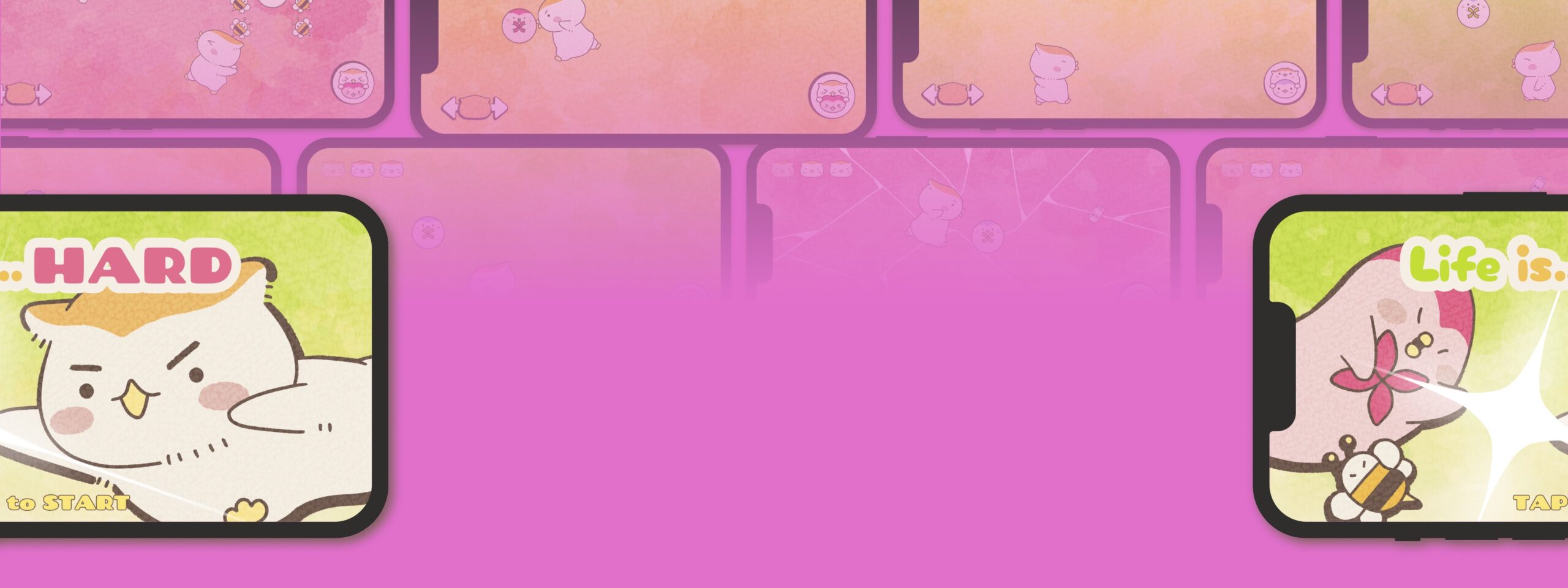
Game UX/UI
How do I design games UX and UI?
Life is HARD is an adorable healing mobile game. This is one of my projects in game design class. This game is derived from a part of the painting, The Garden of Earthly Delights by Bosch. A cane coming from a peach was turned into the core mechanic of “poking”.
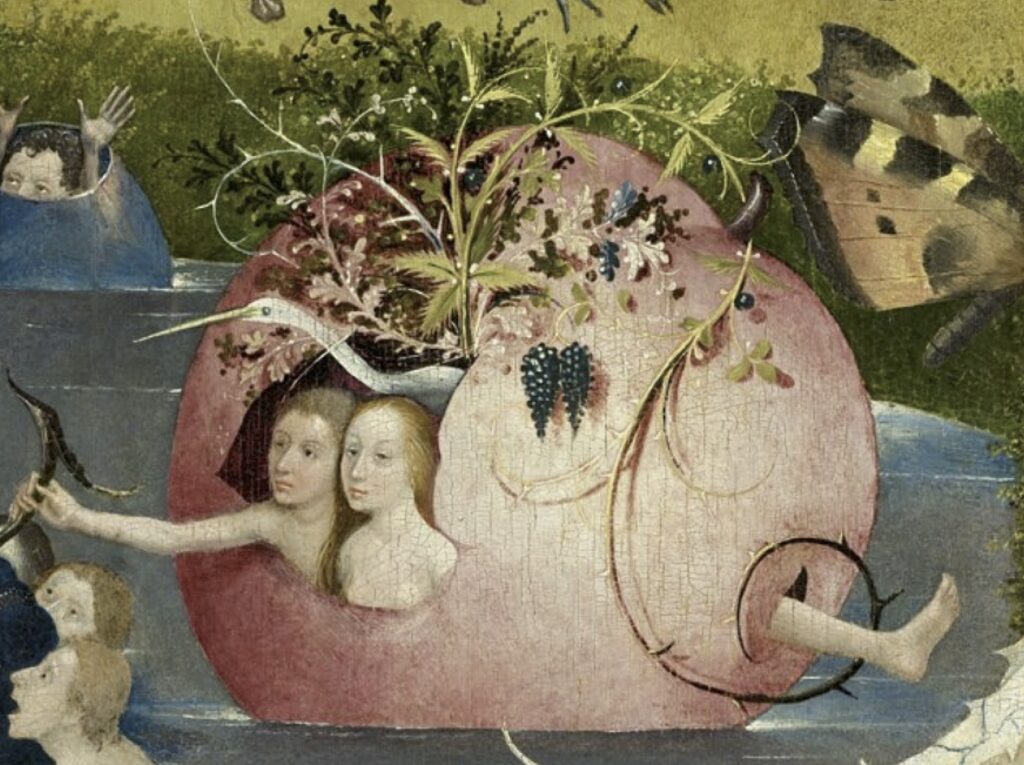
In the following, I am going to show how I design the game experience including but not limited to game mechanics, arts, and interface.
Goals –
Life is HARD is a game mainly focused on the study of basic level design, which is related to the “competency” of Player Experience of Need Satisfaction(PENS) by C. Scott Rigby. Regarding PENS, competency refers to “the game provided a challenging but not overwhelmingly difficult experience and enhanced efficacy”. From the study of C. Scott Rigby, players who experienced a sense of competence would like to continue to play the assigned game. We can see that is the most important “pull” of a game, when comparing autonomy, presence and intuitive controls.
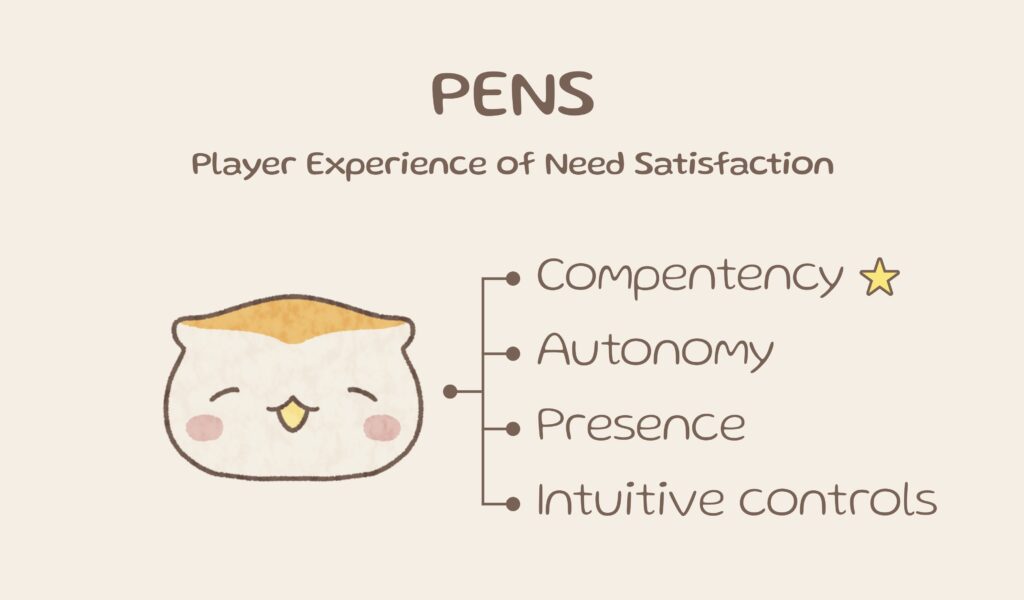
We can see how the mechanic gets harder over time in different levels and secondary or progression mechanics in order to satisfy player experience.
The following is to show how I designed the game regarding competency, autonomy, presence and intuitive controls of PENS.
Competency: Game mechanic and Level design –
Once the control is mastered, secondary or progression mechanics will take place in the later stages to meet the need for challenge.
Core mechanic:
Players can drag the virtual joy-con to control Fukukun left and right and tap on the button for jumping and poking the target, which is the enemy.
Secondary mechanic:
Milk will be the power-up item, MILK. Once Fukukan gets milk, he can kill one bee and the damage to the target will be doubled.
In later levels, the target will send out some bees as obstacles to block the way of Fukukun. If Fukukun touches the bees, chances will be deducted by once. Fukukun can only avoid them to fight against the target.
Level design:
| List of levels | Description of level progression | Wall recovery time without attack | Moving speed of target | Power-ups | Obstacles | Stage clear |
| 1 | Seed of Peach | — | — | — | — | Hit target 5 times |
| 2 | Pit of Peach | 10 seconds | — | — | — | Hit target 10 times |
| 3 | Flesh of Peach | 10 seconds | Increase | Available | — | Hit target 15 times |
| 4 | Skin of Peach | 10 seconds | Increase | Available | Appeared | Hit target 20 times |
Game loop:
The game loop below is to show how the player will be kept challenged with a change in environment as positive feedback.
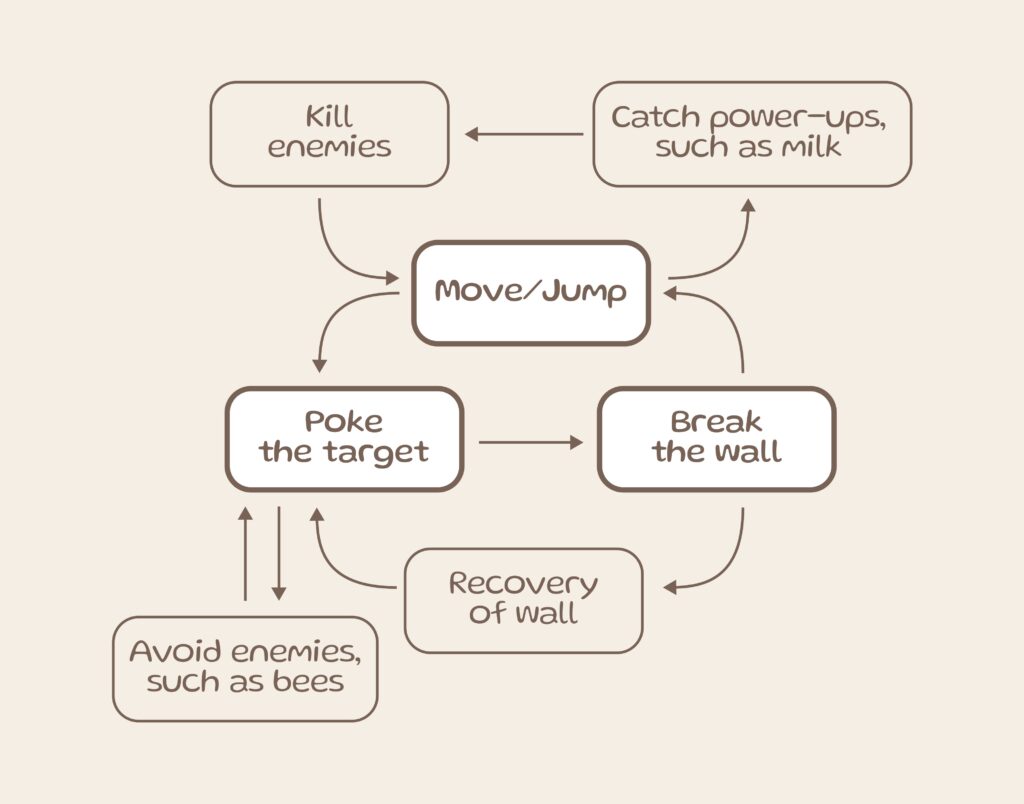
Autonomy: Gameplay features –
The autonomy will be varied in different games. As this is not an open world game, what players can do is limited. However, players can still poke the target by moving the joy-con and tapping the button freely with their own strategies.
Presence: Storyline and Visual style –
Storyline:
In order to provide a comprehensive player experience, a short story was created to go through the game as the “presence” which is also the intrinsic motivation for the players.
“The owl, Fukukun, woke up suddenly. Fukukun looked around, and found that he was in an empty space. While he was walking, a movable mystery creature holding a mystery sign appeared. Fukukun jumped and tried to approach the mystery sign. Let’s find out what’s next?”
The scenes of level cleared and failed are presented by animations to run through the story.
Visual style:
Adorable animal in water color style.
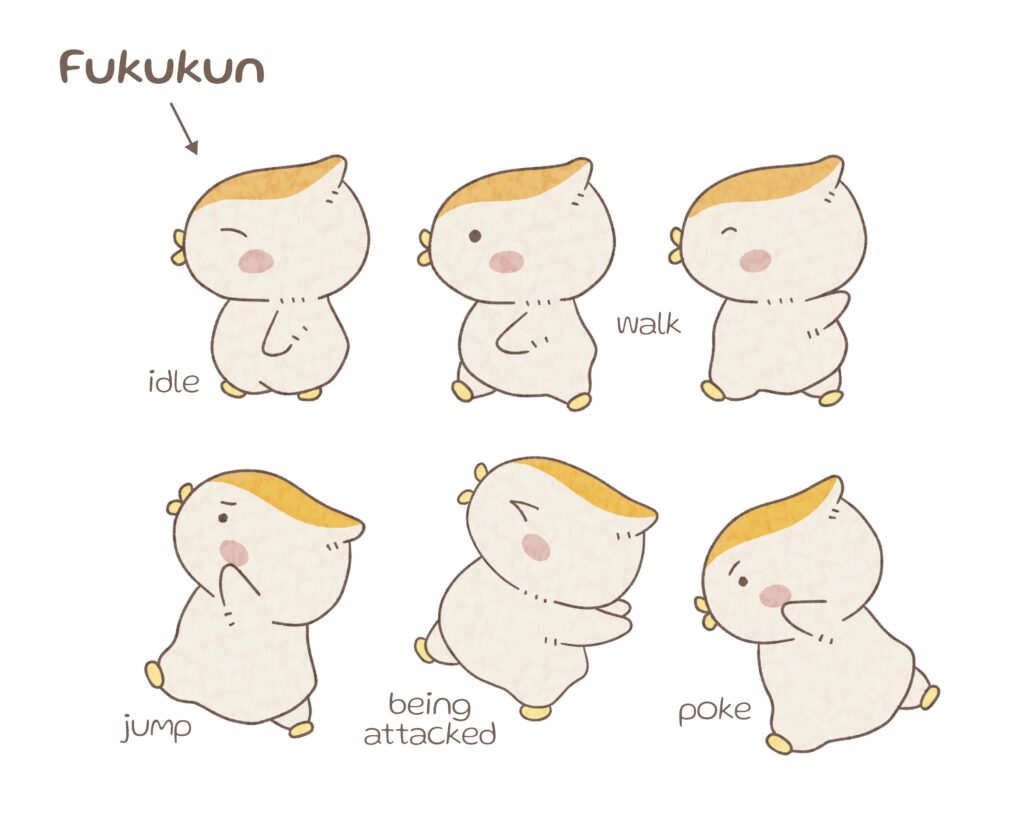
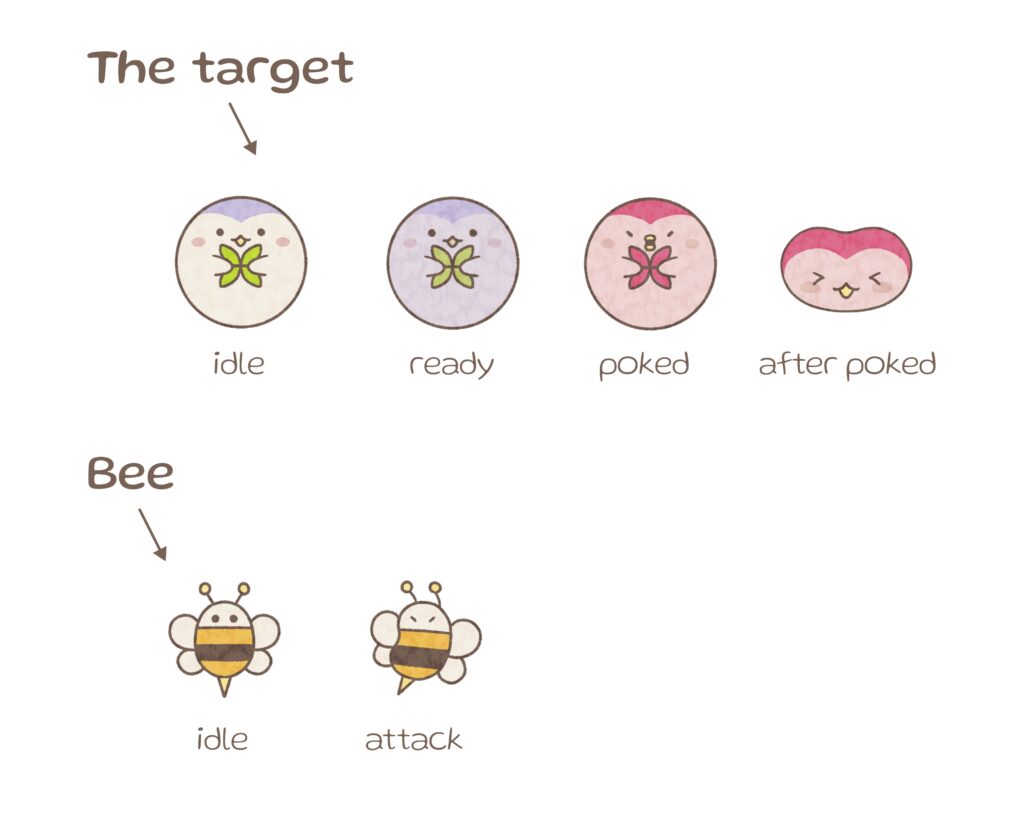
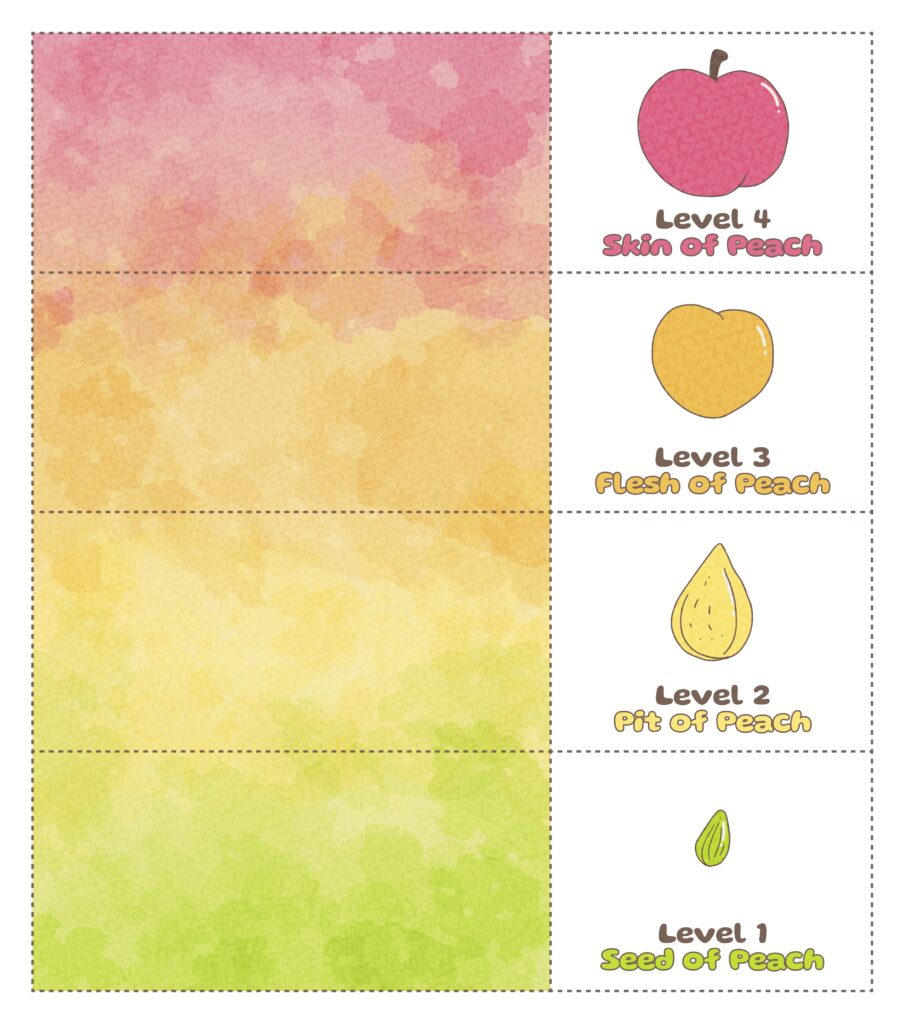
Intuitive controls: UI –
Players can move the character to left and right by dragging the joy-con.
Players just need to tap one button to control the character to jump or attack when it approaches the target. This is aimed at delivering player satisfaction, as well as improving hit reaction.
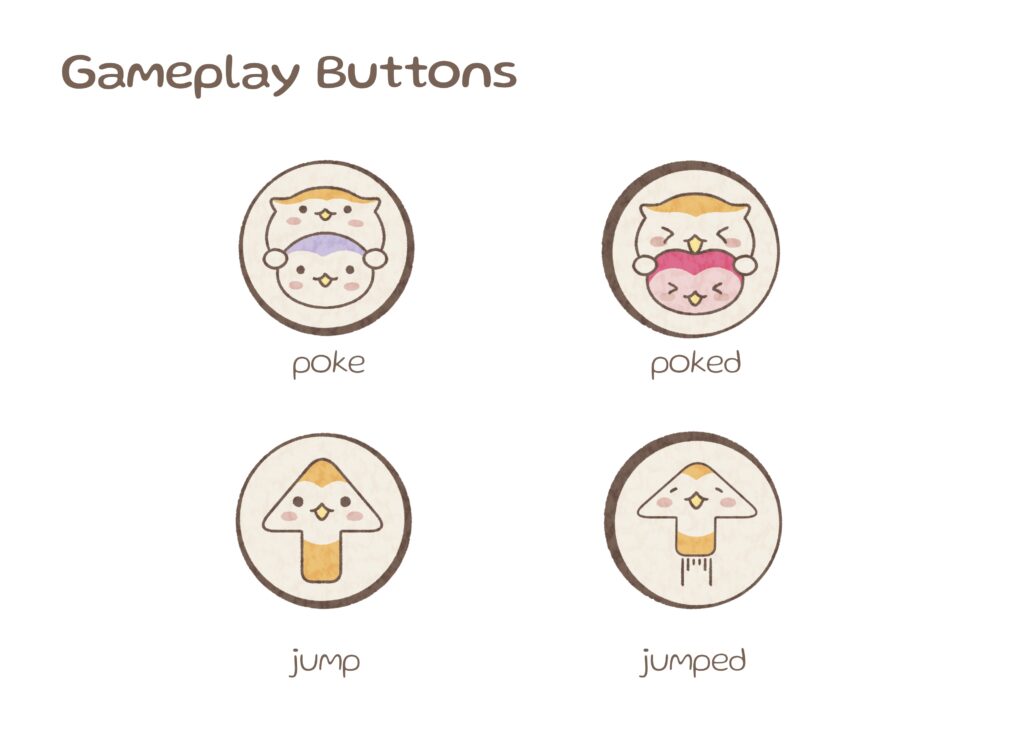
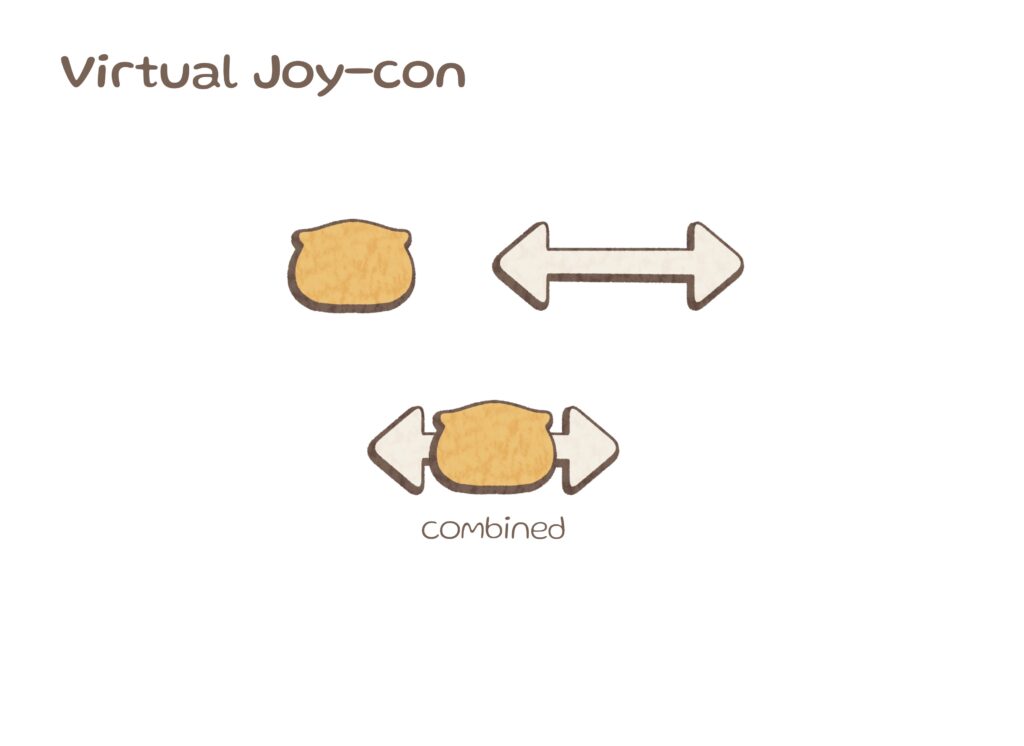
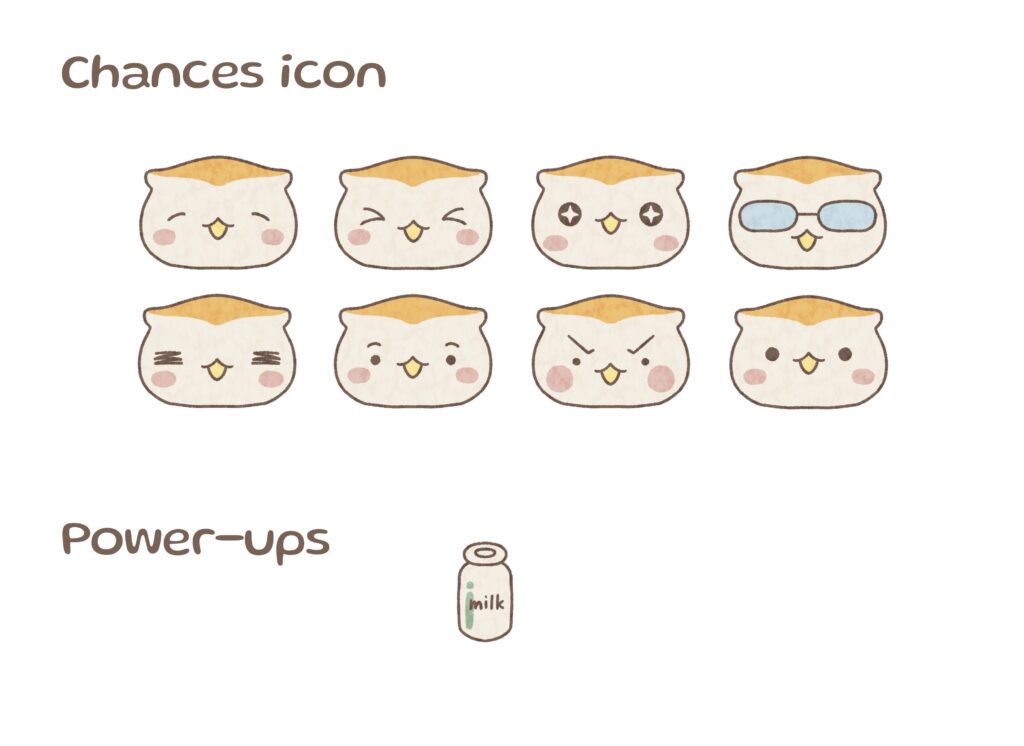
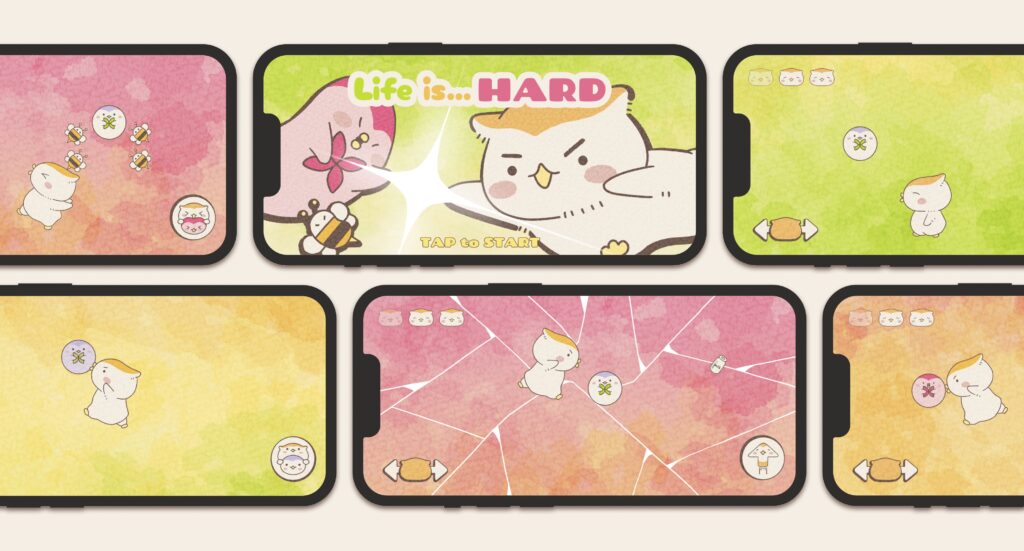
Reflection –
Player test is needed:
This is a study and trial of designing a game with level design. However, to validate if the level design can meet the players’ satisfaction of competency, it still has to conduct a player test.
The satisfaction of autonomy is limited:
Although this is not an open world game, if more time and resources are available, there is still more that can be done. For example, a larger map for the player to explore so that players can have more strategies.
If more time and resources are allowed, there will be:
More stages available. Although this game idea is derived from part of the painting of poking a peach, the game mechanics can be applied to many different items for players to explore. Not only fruit, for example, electronic devices, houses, or whatever stuff is constructed with layers.
A more comprehensive rewarding system. After completing the stage, the feedback given to the players is only passed to the next stage. A rewarding system with giving out coins should be better implemented, so that the players can collect coins such as buying skin to customize their character.
Life is HARD
Genre – 2D healing action game
Platform – Android
Game modes – Single player
